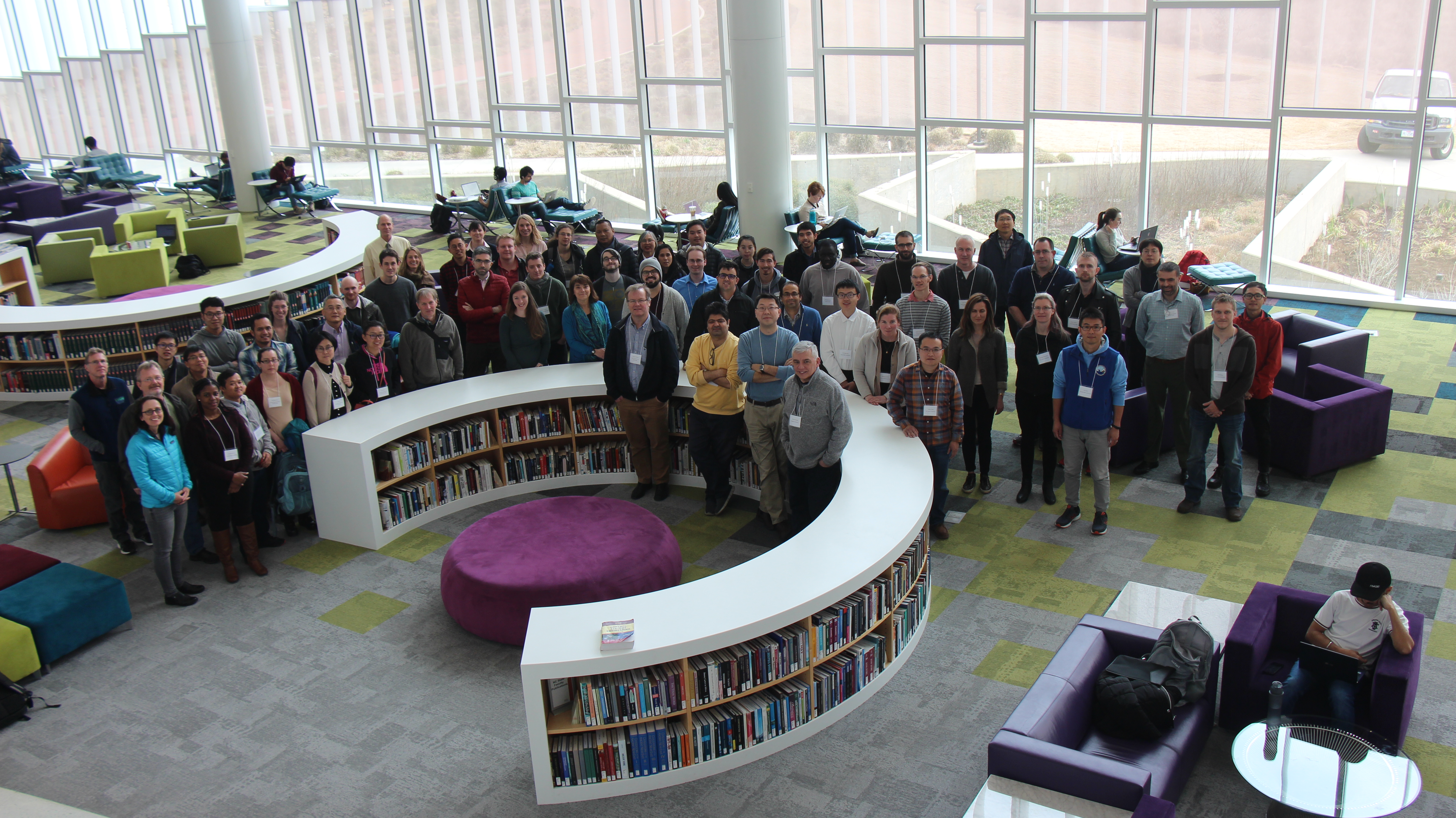The biennial COAWST Modeling System Training was held in James B. Hunt Library at NC State University from February 25-28, 2019. Over 100 researchers attended in person or on line to learn more about the Couped Ocean-Atmosphere-Wave-Sediment Transport Model System. Developers and expert users of WRF (Weather Research and Forecasting model, the atmospheric component), SWAN (Simulating WAves Near shore, the wave component), and ROMS (the Regional Ocean Model, the ocean component), gave tutorials and demonstrations on each model separately and how they interact. Users from around the world traded case studies, tips, techniques, new features, and additional tools for COAWST.
Dr. John Warner of the U.S. Geological Survey and Dr. Ruoying He of NC State University’s Department of Marine, Earth, and Atmospheric Sciences hosted the workshop. Dr. Warner developed the COAWST modeling system and moderates and maintains it. Dr. He’s Ocean Observing and Modeling Group were involved in developing COAWST and includes expert users. They thank everyone who attended the event and made it a success.
Applications of the COAWST Modeling System include characterizing and predicting shore erosion, African easterly winds that generate the hurricanes which hit North America, Southern Ocean ice thickness and extent, wave effects on currents, sediment transport in estuaries, tropical cyclone paths and intensity, rip currents, and many more oceanographic and meteorological interactions.
Contact Dr. John Warner (jcwarner [at] usgs [dot] gov) for more information on the COAWST Modeling System.
COAWST Reference: Warner, J., B. Armstrong, R. He, and J. Zambon (2010) Development of a Coupled Ocean-Atmosphere-Wave-Sediment Transport (COAWST) modeling system, Ocean Modelling, 35(3), 230-244, doi: 10.1016/j.ocemod.2010.07.010


